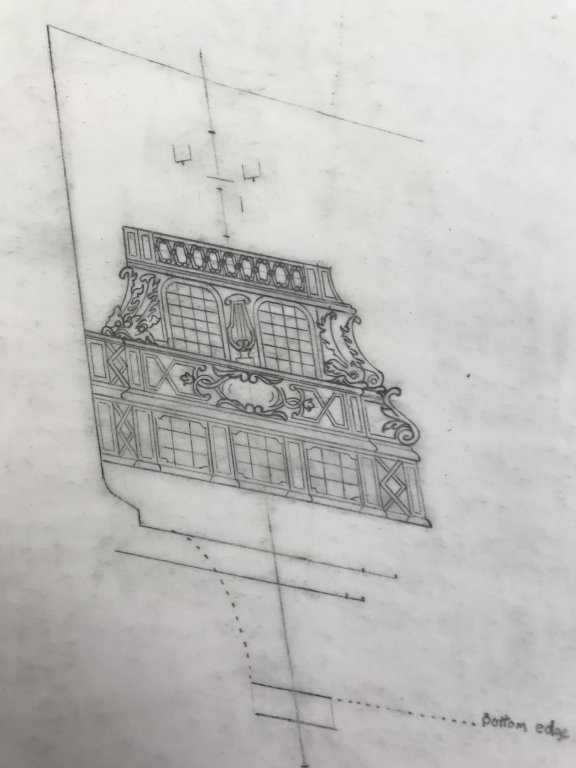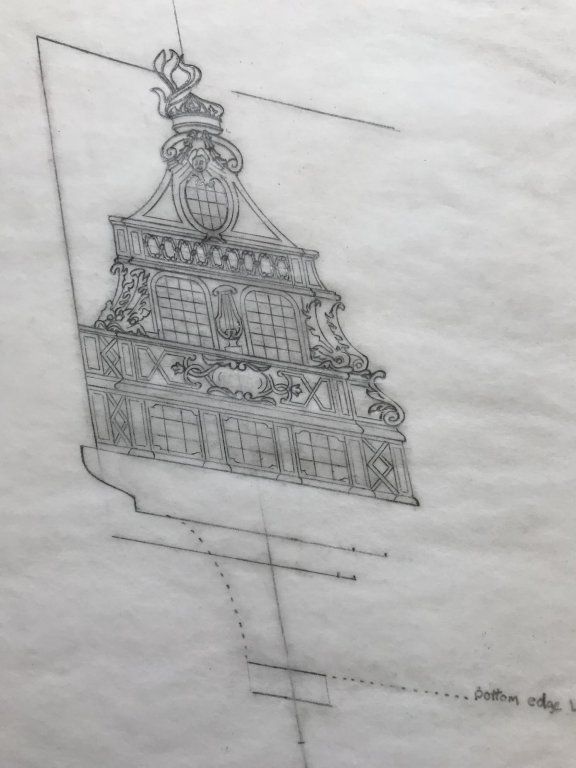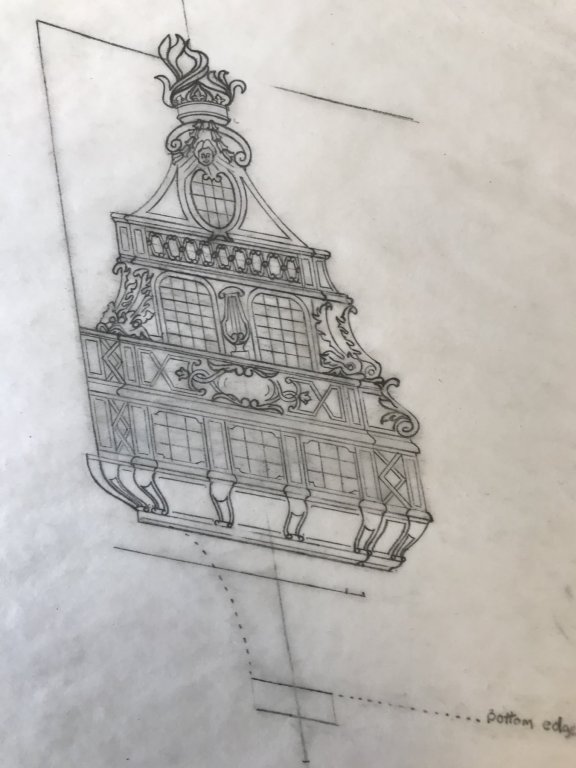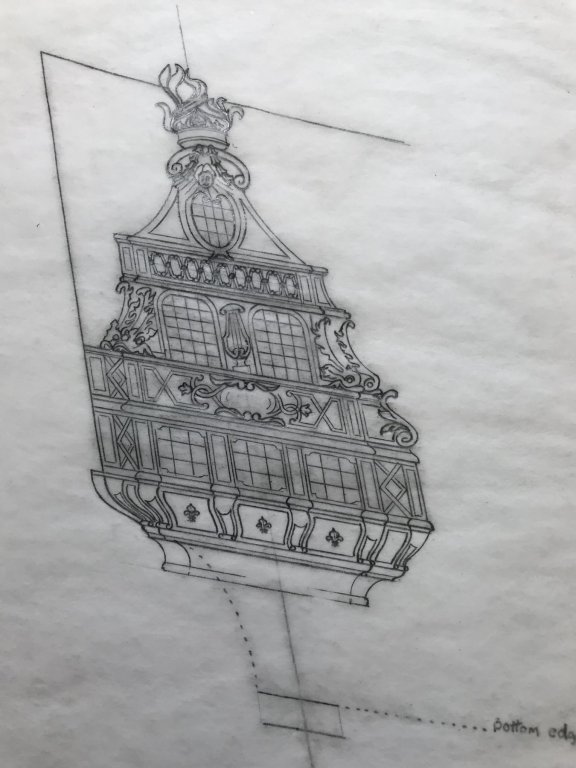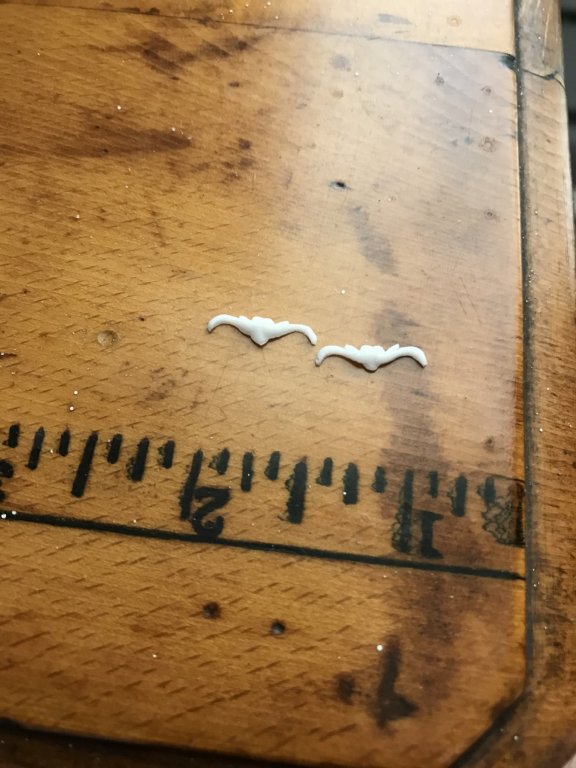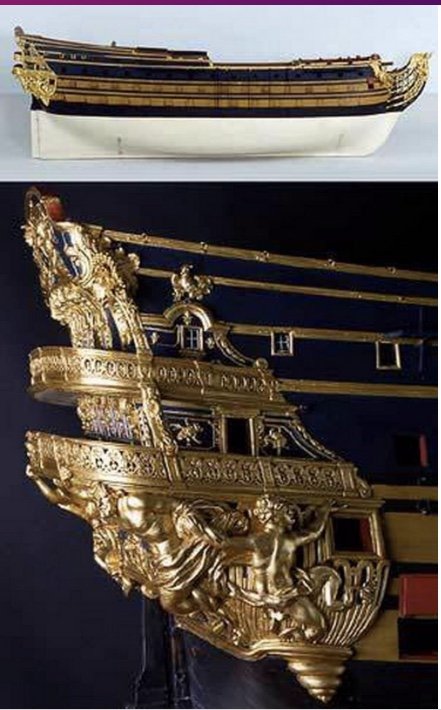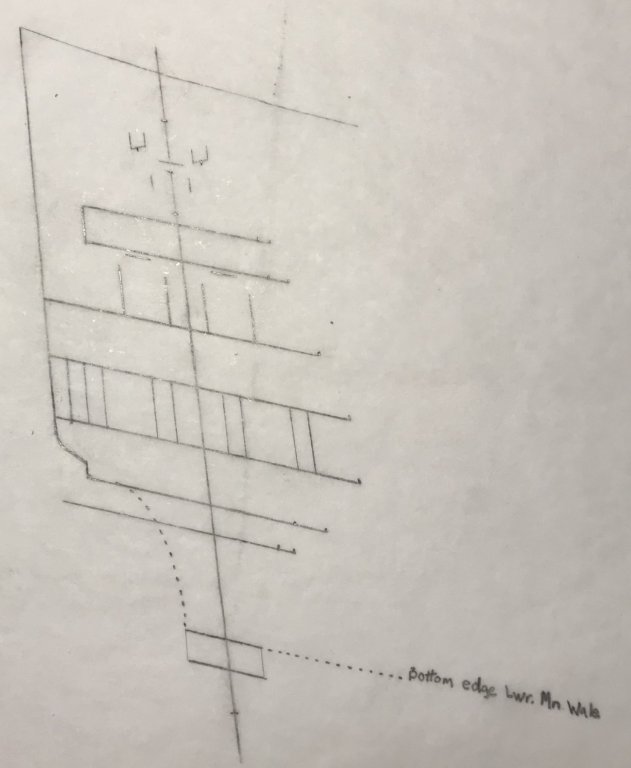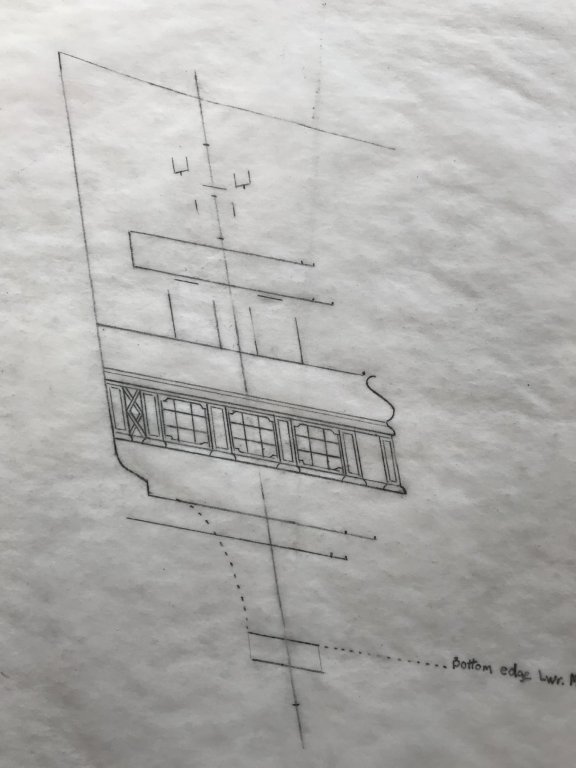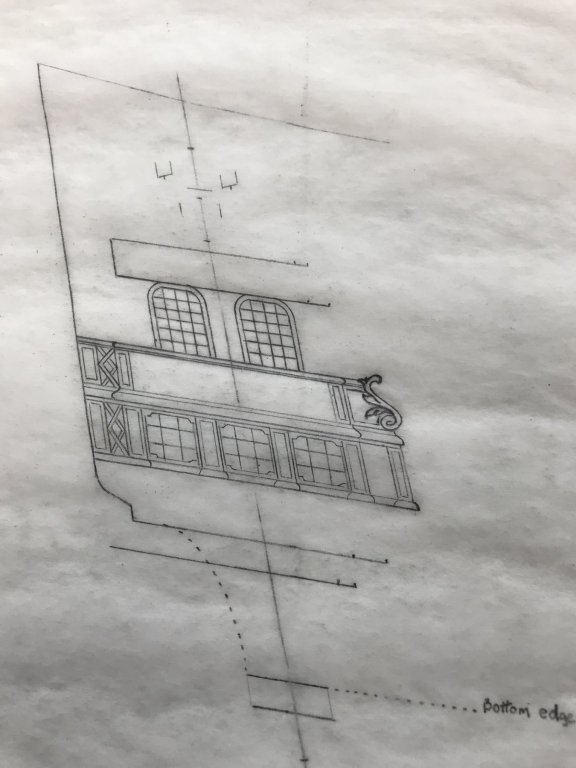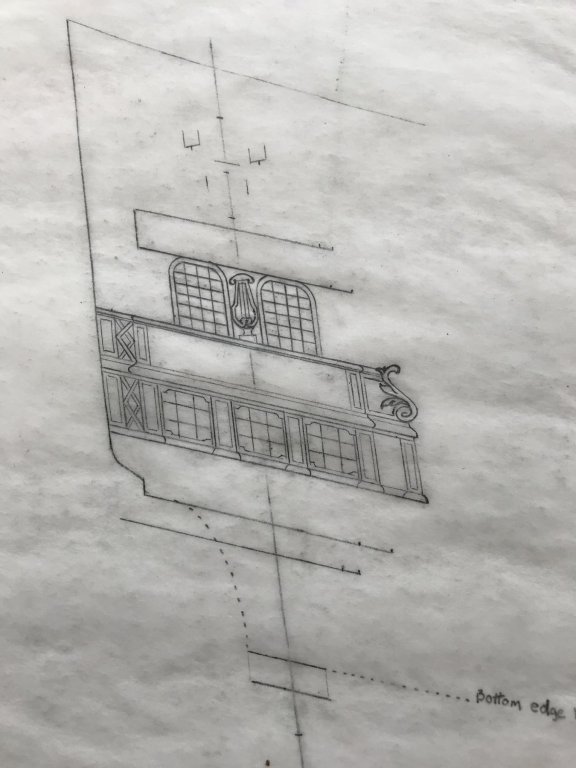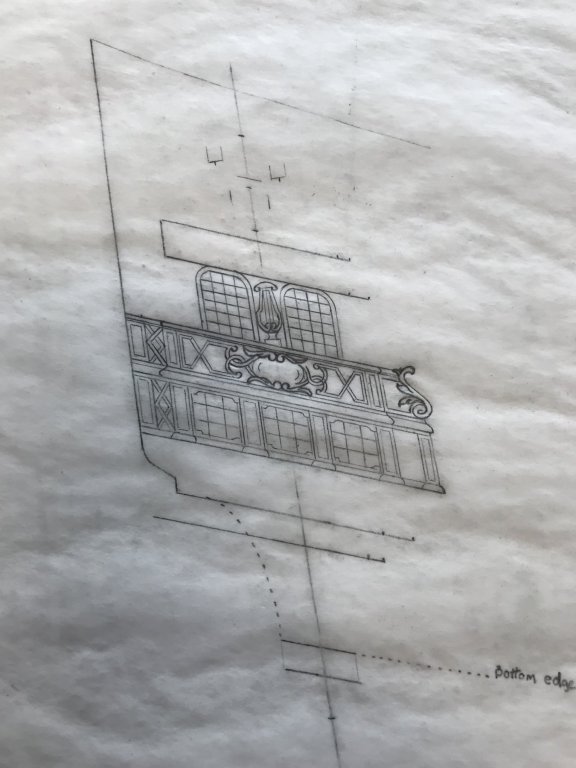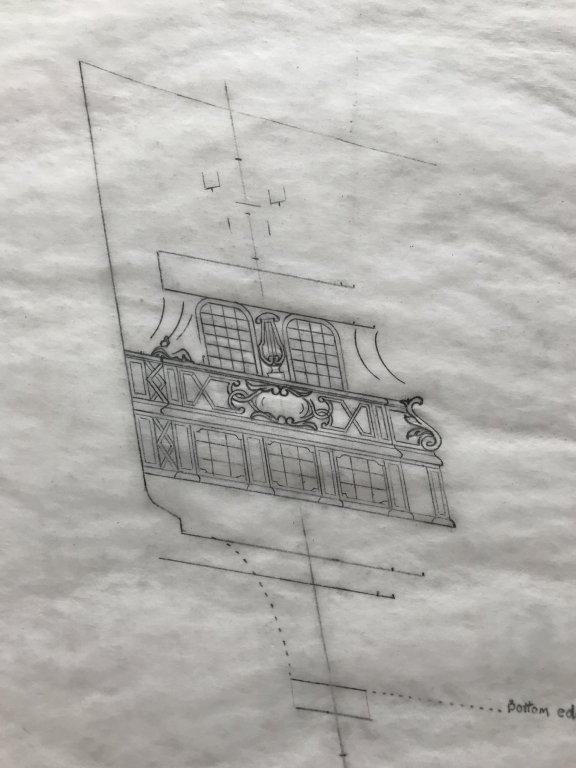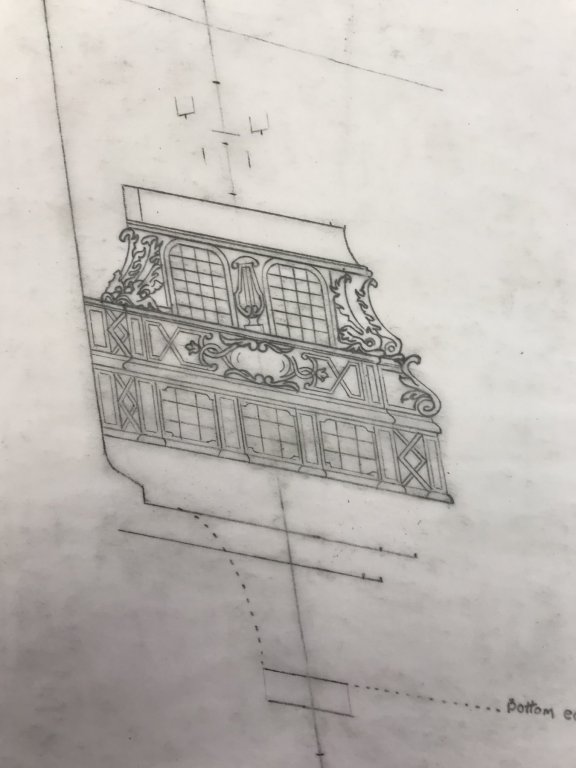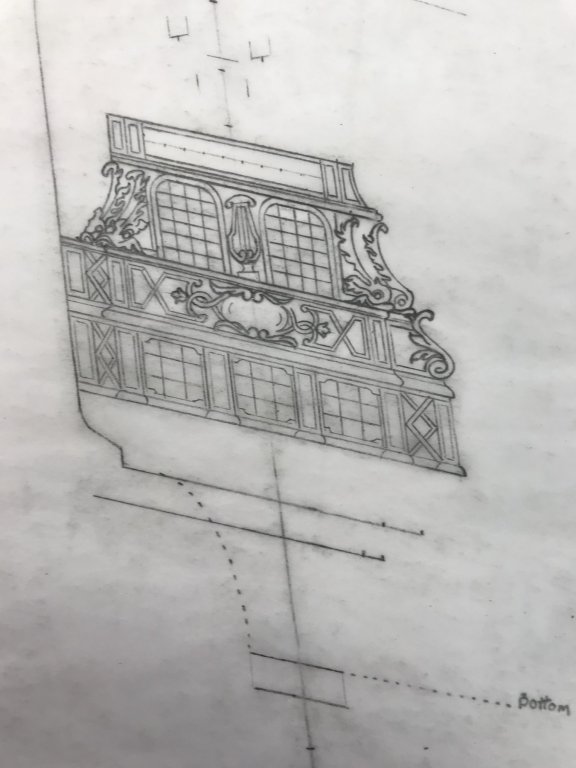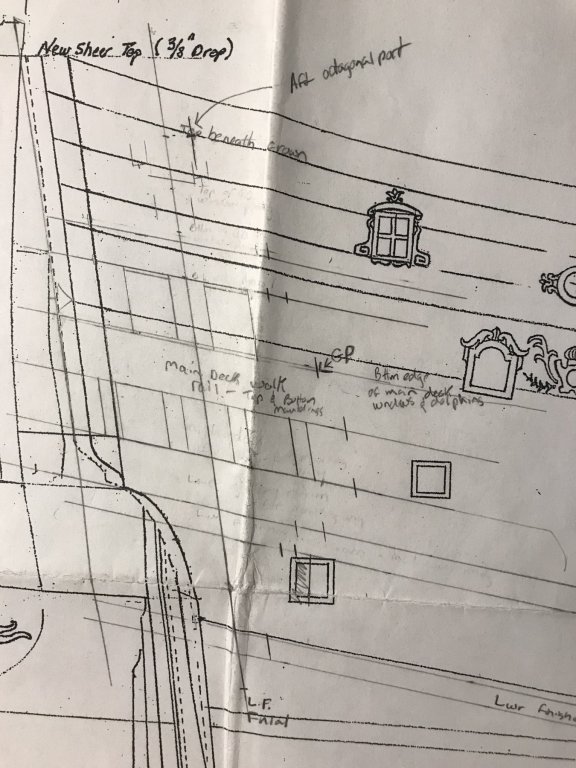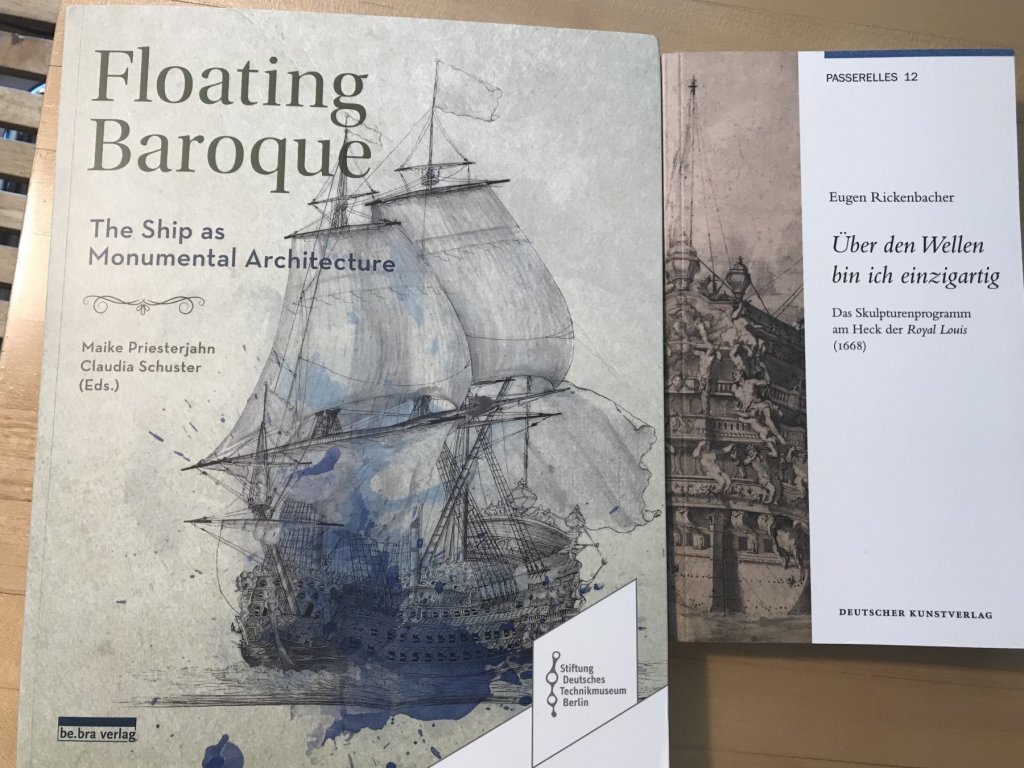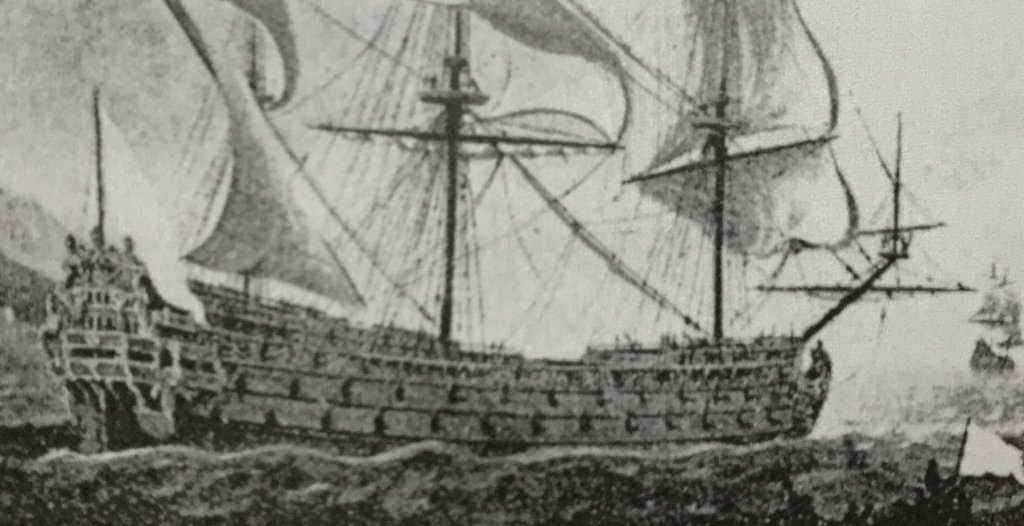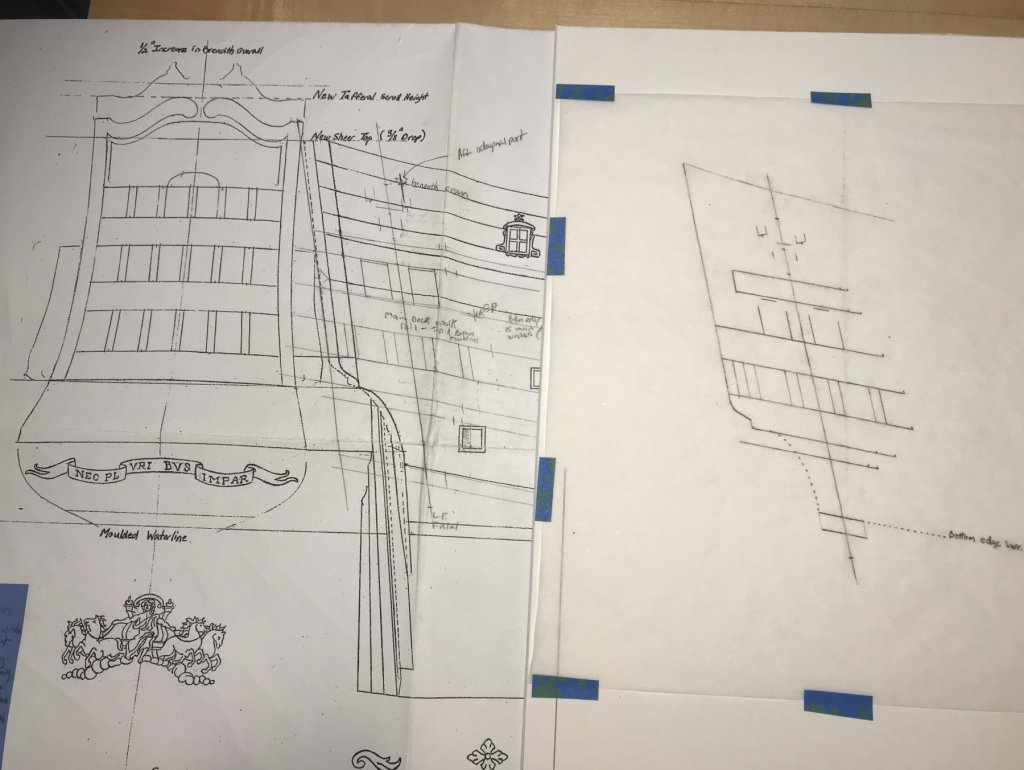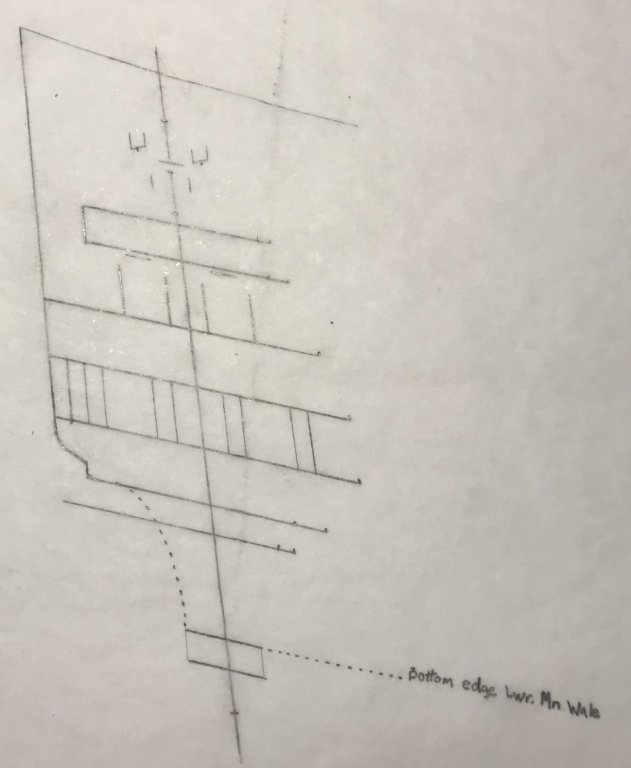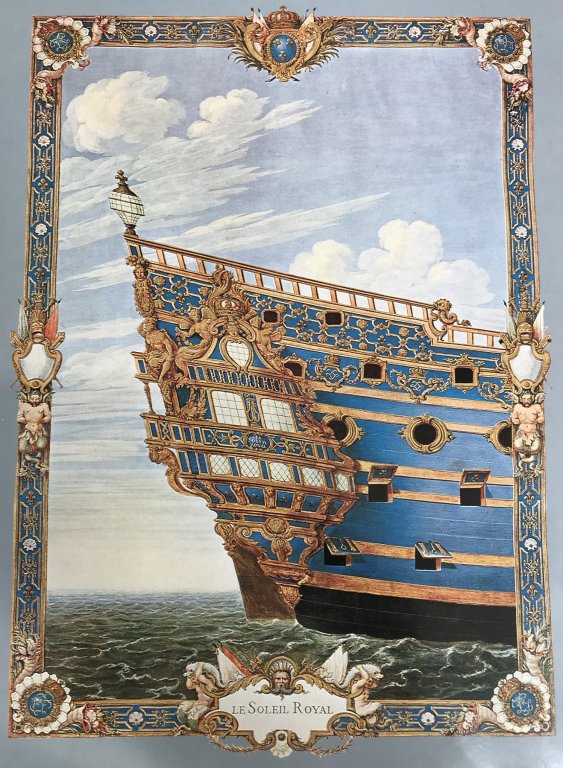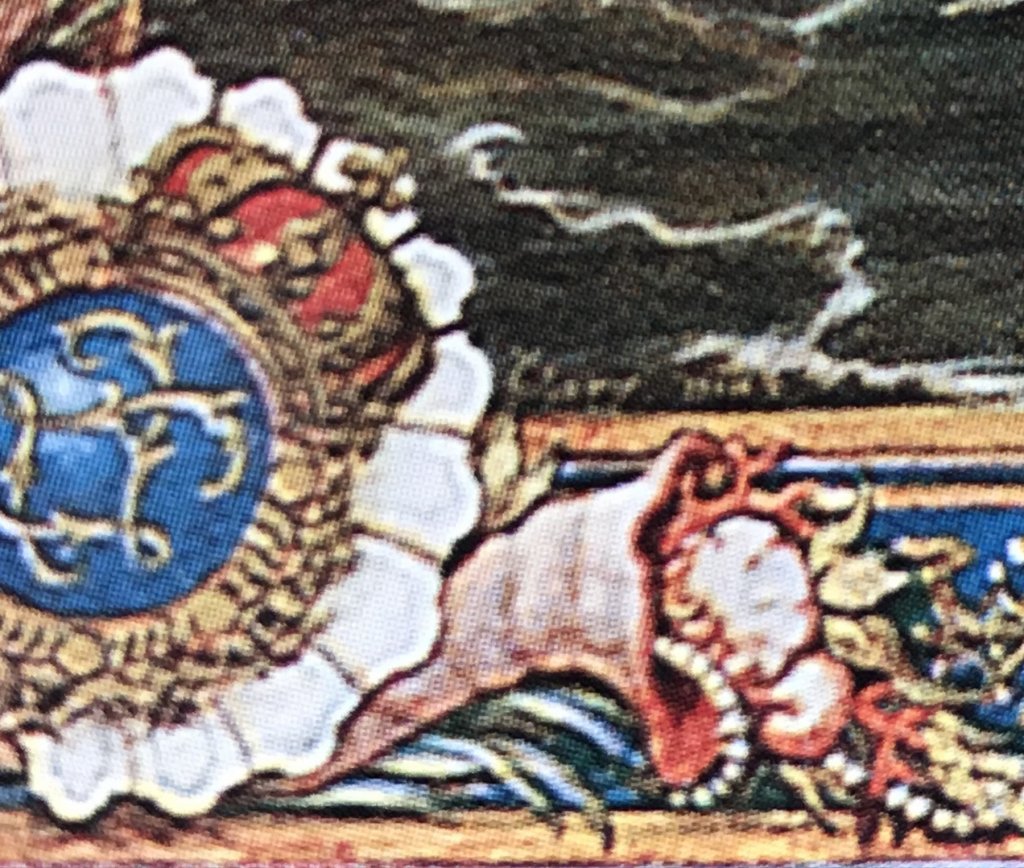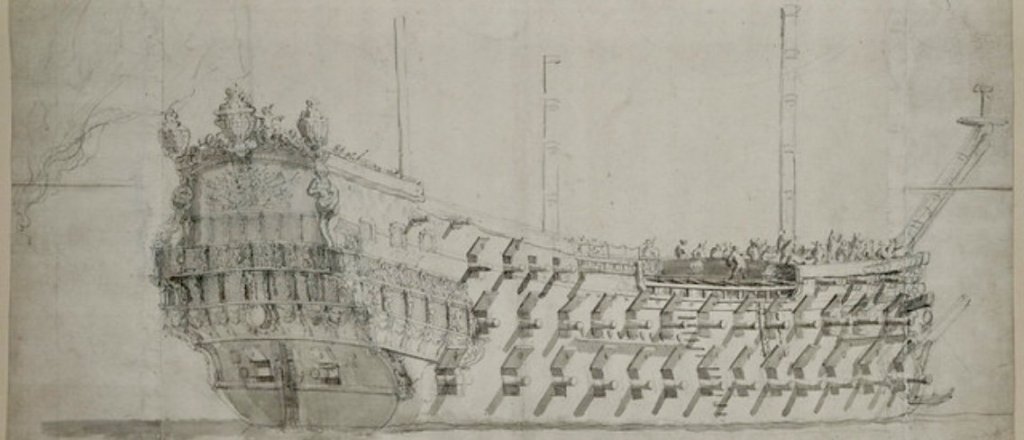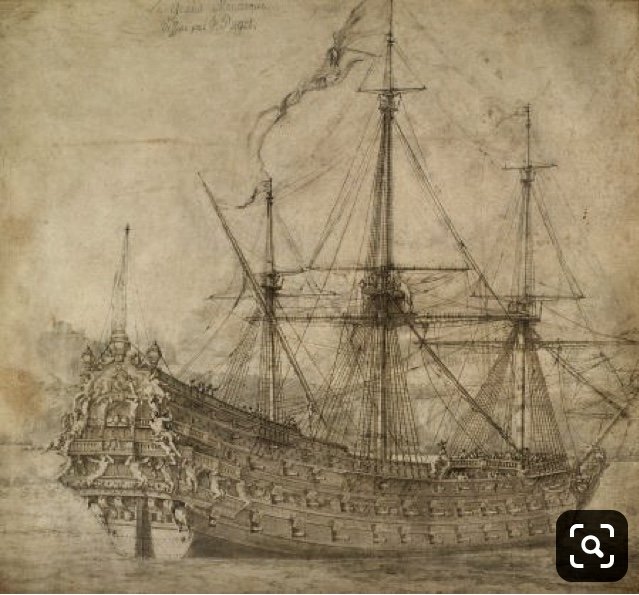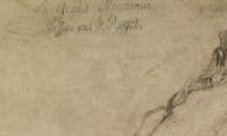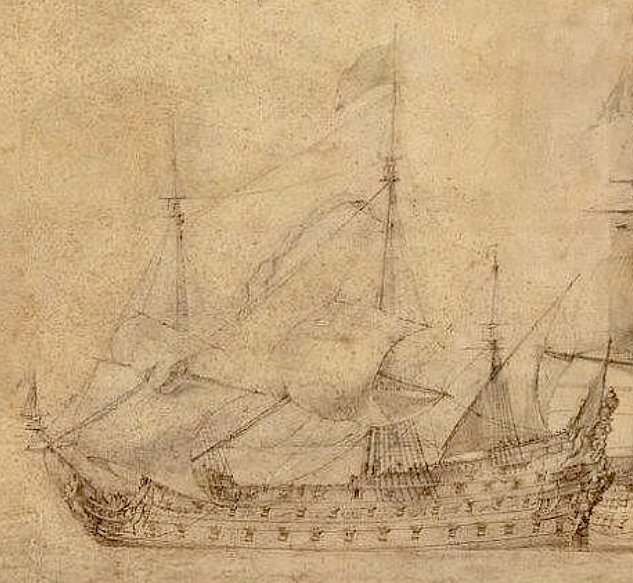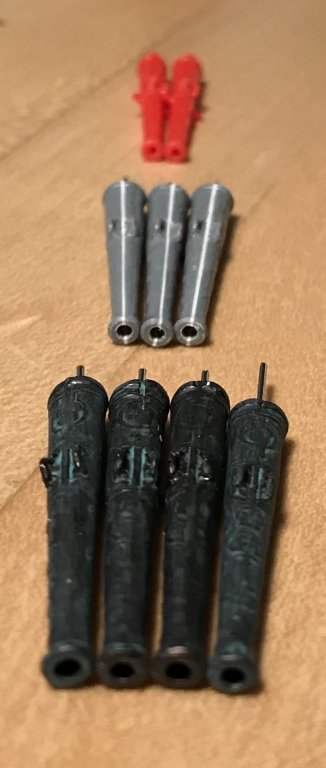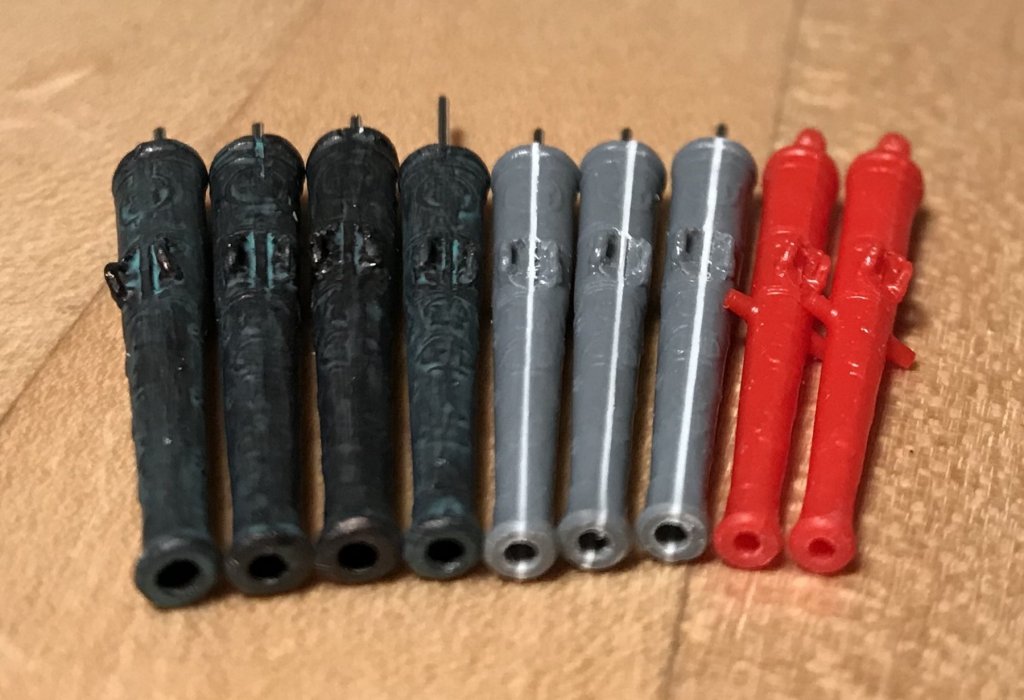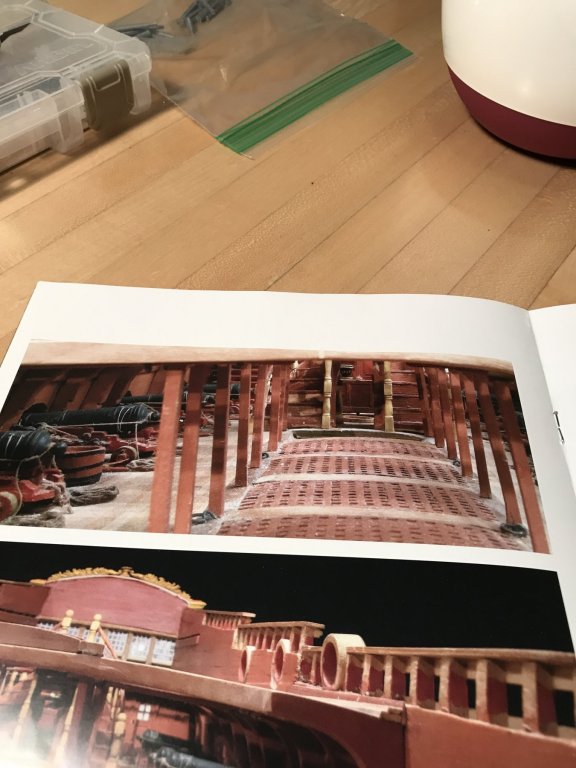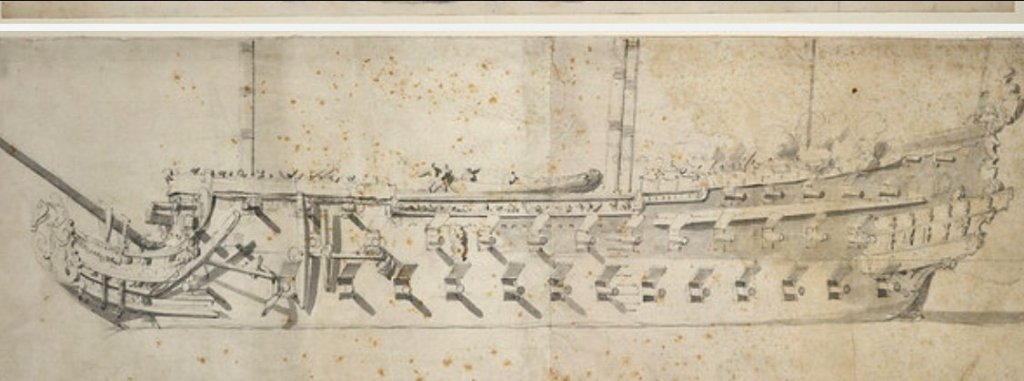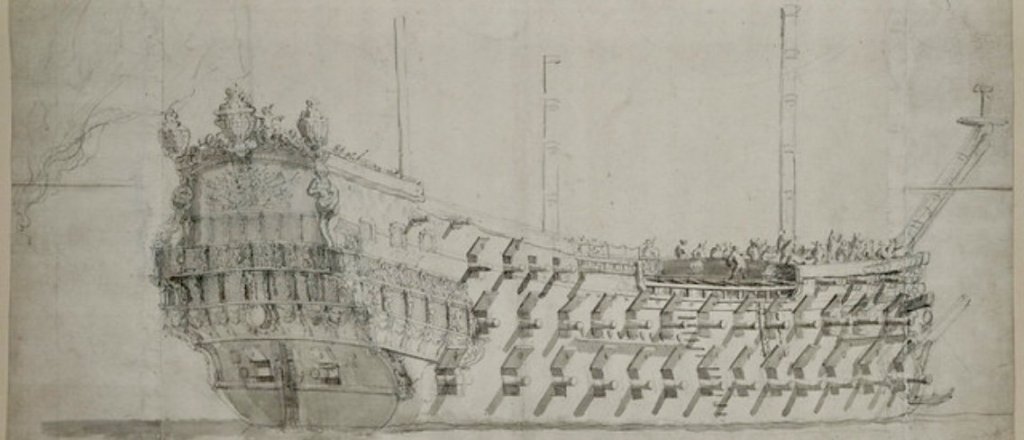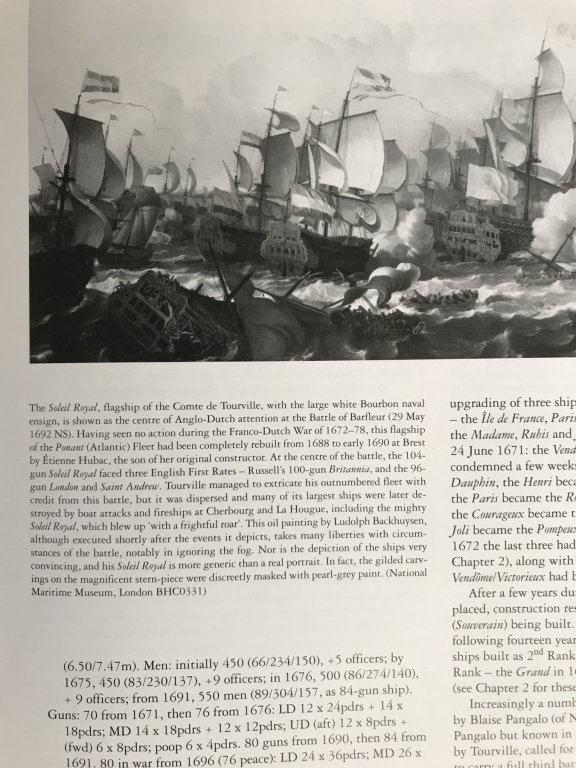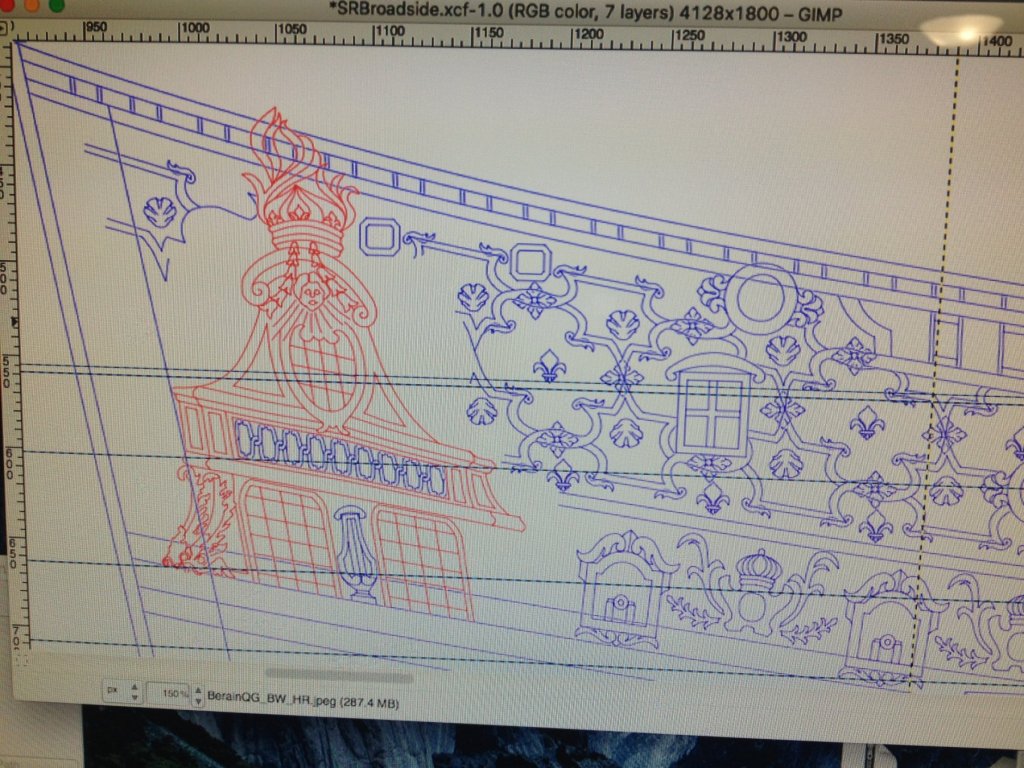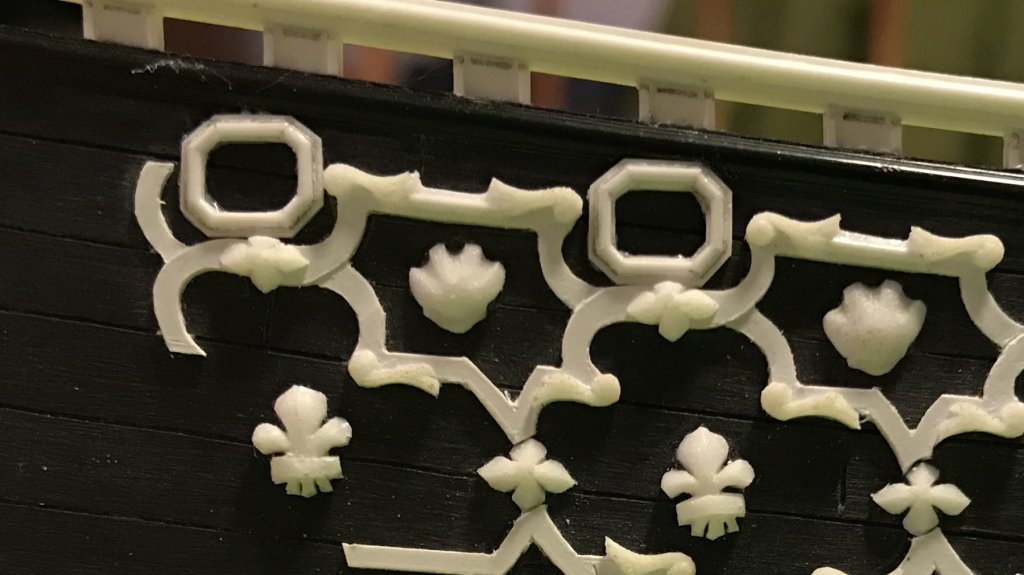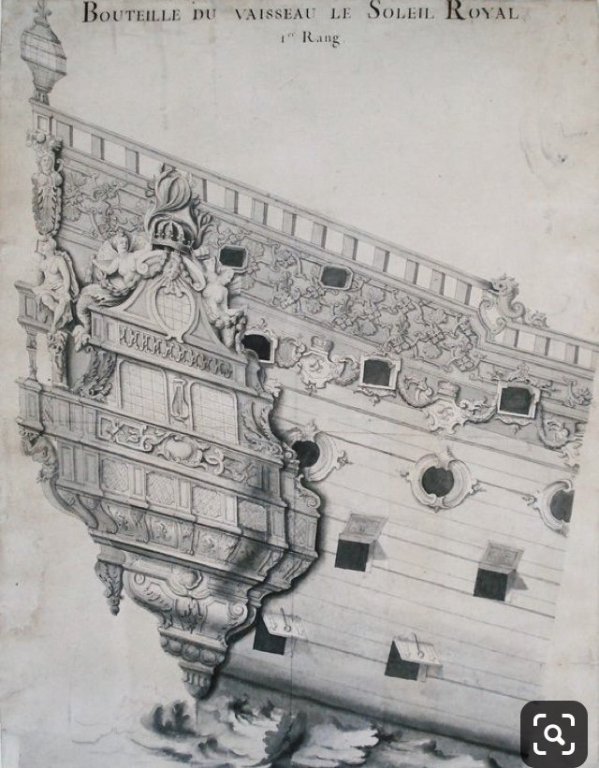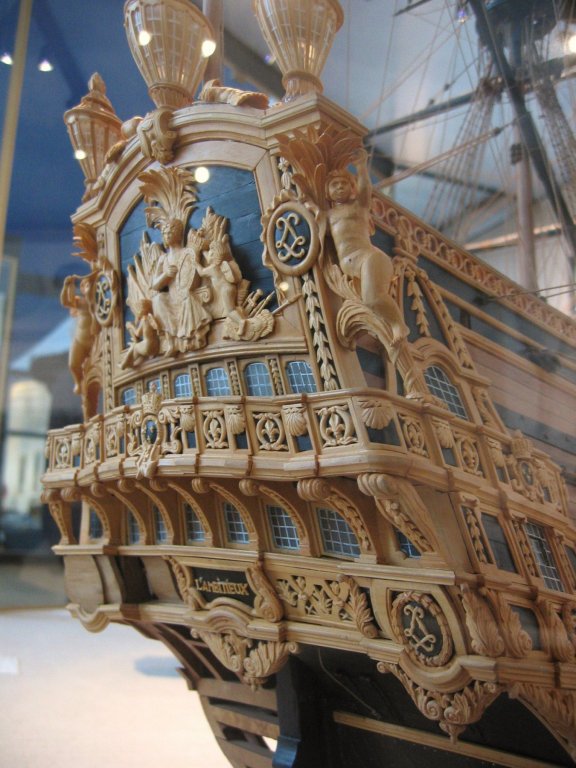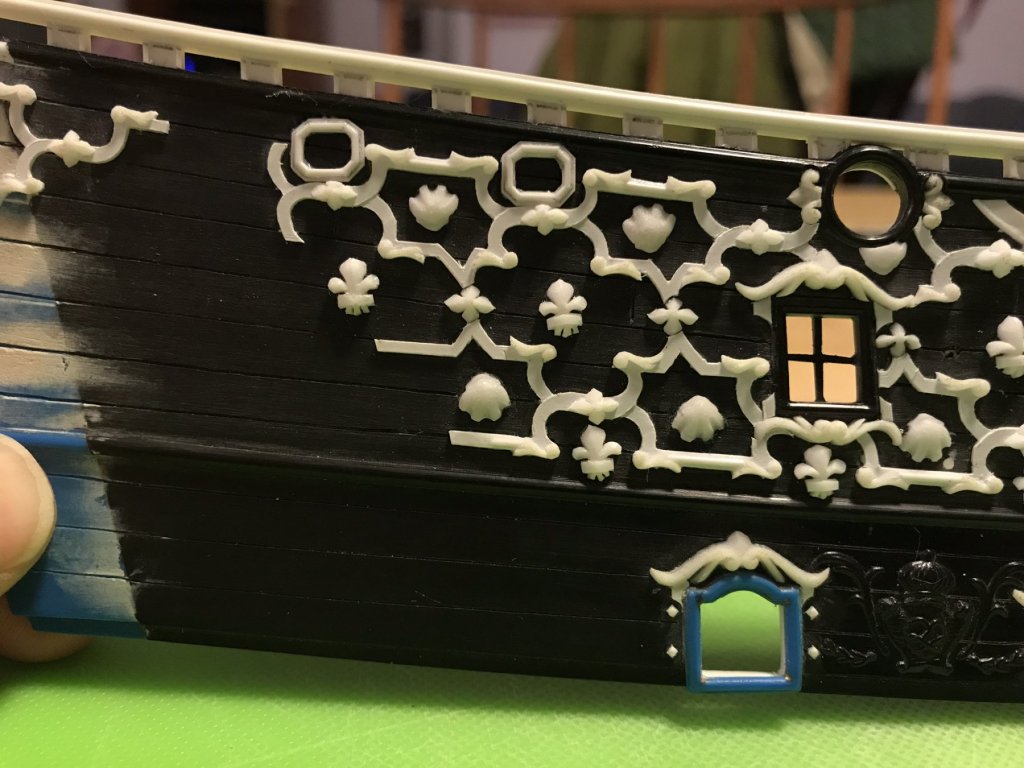-
Posts
3,295 -
Joined
-
Last visited
Content Type
Profiles
Forums
Gallery
Events
Everything posted by Hubac's Historian
-
Yes, totally missed it. Since we moved, I rarely look at MSW on my desktop because the computer is so old and slow. I suppose I will have to upgrade that, at some point.
- 2,696 replies
-
- heller
- soleil royal
-
(and 9 more)
Tagged with:
-
Ah, okay! Sorry Druxey - I was viewing your post on my phone; I thought you had merely high-lighted the lyre, as I had drawn it. So, I thought - “that looks pretty okay. I’m close.” When I enlarged your drawing, I could then see your axis lines, as compared with what I had posted before. So, yes, you are right on the Marc, there. Name pun intended! My apologies for not being more attentive. The input is appreciated.
- 2,696 replies
-
- heller
- soleil royal
-
(and 9 more)
Tagged with:
-
Yes, I agree Druxey, but more specifically parallel with the sheer of the quarter galleries, as opposed to the top sheer, which is much more pronounced. The drawing of the lyre is close, but whispers of a hair out of whack. I am confident that I can correct these discrepancies with the tools.
- 2,696 replies
-
- heller
- soleil royal
-
(and 9 more)
Tagged with:
-
I’ve worked my way up through the crown finial of the upper finishing, and down to the division between the lower gallery and the lower finishing. I’ve realized and corrected a few mistakes, along the way. At this point, though, I think it’s time to spray the drawing so that I can fix in place what I have, before moving on to the lower finishing. I’ve already decided that I won’t include the stern balconies or the mermaids on this vellum; I’ll do those drawings separately, as overlays of photocopies of this drawing: There are supposed to be these tiny faces at the top of these pilasters, between panels of the lower gallery; while I plan to model them, I decided not to muddle the drawing with them. There remains this funky little area, on the lower gallery, as it extends aft into the false gallery that will support the Four Seasons. I’m not sure how all of that will pan out, in three dimensions, but I think it will work.
- 2,696 replies
-
- heller
- soleil royal
-
(and 9 more)
Tagged with:
-
For these quarter galleries, almost all of the ornament will be one-off carvings. The four mermaids flanking the quarter galleries, for example, are different fore and aft, and then they have to be mirrored from port to starboard. I will not be fitting out the interior of the great cabin, however, I may do a separate model of the ceiling itself in a larger scale, like 1:48, or 1:24. That would make an interesting side display, but it depends upon trying to ascertain what the painted portrait panels may have looked like. In any case, I won’t spend any time trying to figure that out until the model is complete. The one thing I can recycle is this ornament (with a little editing) to frame the name badges: Speaking of mirrored drawings, what I like to do is use the photocopier to give me a perfect mirrored image. That’s a great tip - using hairspray as a fixative. I think I will need to do something like that, soon, because the lower section of the drawing is getting pretty muddy with graphite.
- 2,696 replies
-
- heller
- soleil royal
-
(and 9 more)
Tagged with:
-
Hi Heinrich! Yes, actually, I was hoping to re-cycle the ornament from the lower sill of the main deck ports, which isn’t quite as arched as the header ornament that (I think ) you are referring to. Any time savings will be a huge benefit. Thank you for looking in, and as always, for your insight. Floating Baroque is now one of my most treasured library resources! Thank you for bringing it to my attention!
- 2,696 replies
-
- heller
- soleil royal
-
(and 9 more)
Tagged with:
-
Tony Devroude is building a very well-researched and beautifully developed full-frame model of the DR, for which he has written a two-part article in the Nautical Research Journal. He is building this earliest version, as well. The articles are informative of his research and his process of developing a workable hull plan that looks every bit the part of a first-rate of the First Marine. I will send you a copy of the articles. The model you are picturing, though is not the DR. Based on it’s structure and ornamentation, it would be a ship from somewhere in the 1720s. There is a large model of another Dauphin Royal, at Rochefort from the 1720s, but it bears no resemblance to the DR of 1668. Anyway, this is an interesting instructional model, and I will gladly follow along on this one, as well.
-
Well, it has been a good week on the drawing board. Just a lot of drawing, erasing, re-drawing, cleaning of the page, etc. A montage: This was the second attempt at drawing the windows on this lower tier. I had them drawn in, before I realized that I failed to include the bottom moulding, and the windows looked too tall. One of the things that bothers me about the Berain/Vary drawing are these triple rectangular panels along the aft edge of the stern. I decided to break them up by inserting this crossed-diamond relief, that Berain does incorporate into the end panel of the main deck stern balcony. I’m not 100% happy with the lyre, here, but I re-drew it so many times, and it is a detail that can be perfected with the tools, so long as the basic proportions are right. This is where I left off for today. So far, I am very happy with what I perceive to be a better-balanced arrangement without unnecessary distortions.
- 2,696 replies
-
- heller
- soleil royal
-
(and 9 more)
Tagged with:
-

Roter Löwe 1597 by Ondras71
Hubac's Historian replied to Ondras71's topic in - Build logs for subjects built 1501 - 1750
Truly beautiful, clean work, Ondras! She is really coming into form, now! -
Well, I am just now finishing Daniel Dessert’s La Royale, Vaisseaux et Marins du Roi-Soleil. While I will say that it is an excellent, and broad overview of Colbert’s development of the French navy - covering the political factors, the geographic challenges and limitations of marshaling resources, the difficulties of filling the ranks with capable seamen and officers, and the logistics of building ships and running shipyards - precious little was said specifically about Soleil Royal. That’s okay, though, because my two latest additions to the library have just arrived: Although written in German, Uber Den Wellen is already worth the low price of admission simply because it provides super clear prints of the Royal Louis/Monarque drawings by Puget; now, I can really see and understand what the lower stern balcony/quarter gallery structure and support really are! But there is also this: Apparently, the author found the same print of this portrait from the R.C. And Ramola Anderson book from 1926. Perhaps, though, this image was taken from an original edition because the print quality is not quite as poor; generally, there’s better contrast than the images I have posted already. The German author doesn’t have any firm ideas about where the painting currently is, or what it represents; he suggests, though, that it may be the Royal Louis. And, it may very well be. Is that a sitting Monarch with a shackled slave to his right? Maybe. Could be Apollo with charging horses, though. Is the tafferal pediment domed or reverse-serpentine? Still too difficult to say. One thing that is ever so faintly more apparent, though, is that the band of heraldic ornaments appears to exist between the main deck guns, and not between the middle deck guns, as seen on the RL/Monarque portraits. From my point of view, also, the entire stance and presence of this mystery ship seems a little lower in the water, and slightly broader of beam than the RL/Monarque portraits. So, until better evidence comes to light, I am going to stick with my educated guess, here, that this ship is Soleil Royal before her refit. Now, one supposition that I have held onto for quite a while, but must now relinquish is that the following gauche portraits were the work of Etienne Compardelle: However, as the Musee and every expert on the subject of the First Marine will tell you, this is the work of Pierre Vary. And that must evidently be so, because I can just make out his signature in the corner of my dust jacket: What I can’t say, even after all this research and thinking about it, is that these are absolutely, definitely the refit quarter galleries. I do feel strongly, though, that they are because there is much evidence of Berain’s oeuvre in the small ornamental details of their composition. And that’s where my second book, Floating Baroque, is really going to pay huge dividends; there are a number of stern/quarter gallery sets of drawings of first and second-rates, reprinted with absolute clarity, and originating definitively at the hand of Berain. And, so, with this reference as an additional guide, I can begin to correct some of the problems inherent in this quarter gallery that I have chosen to re-create. The past few days, I have established firm reference lines (the edge of the stern, and a quarter gallery center line, running parallel), so that I can establish the levels of the QG, location of windows, and the lateral parameters of the QG, at each level: Because I moved my lowest aft gun forward by a quarter inch, there will be no interference with the lower finishing. On the main deck level, the dolphin carvings will just kiss the last gunport in this tier (“GP”), but there won’t be any overlap, as seen in the original drawing. So, after checking my parameters on my scale paper drawing, I transferred them to vellum, which can be erased over and over ,almost indefinitely, without disintegrating: While it is a significant variance from the original drawing, I think the 1-2-3 window arrangement is much less cluttered seeming than a 1-2-5 arrangement, and more in-keeping with what was being done in the late 1680’s, as demonstrated over and again in Floating Baroque. There is plenty of precedent for 5 windows on the lower level (La Reyne, Le Terrible - both Hubac ships), but this seems to be an artifact of the First Marine. My new lower windows will have cross-hatched mullions and not the diamond-hatch that is shown in the original drawing, despite cross-hatch being employed in the levels above. I have also corrected the weirdly inconsistent tapering of this lower tier of windows. So, now, all that remains is to draw in all the details, starting with the windows themselves. That’s what I will be working at, this next week or so, while painting continues in the evenings. Be well, and thanks for looking in!
- 2,696 replies
-
- heller
- soleil royal
-
(and 9 more)
Tagged with:
-
I am inclined to agree with you, Chapman - that the drawing represents the first SR. It seems to be a close, if not exact copy of the Berain pen and wash drawing, which can be definitively dated to the time of her refit. Both that and this drawing bear all the hallmarks of Berain’s compartmentalized organization of the ornamental tableaux. It is my personal belief, though, that Berain was merely editing/updating the ship’s earlier appearance as conceived by LeBrun and refined by Puget. Substitute a camel for a tiger, at the feet of Asia; suppress the upper stern balcony, so that it appears, merely, as a non-projecting band of ornament beneath this upper tier of gallery windows; substitute male warriors for the figures of the Americas and Africa; perhaps, also, that the figures of the four seasons may have been slightly different in that the starboard figure of Autumn may have originally been a female figure and not the male figure drawn by Berain. Consider, once again, the following very detailed description of SR, excerpted from Sur La Vie Et Les Ouevres de P. Puget, by D.M.J. Henry, 1853: The stern of the Royal Sun, whose decoration is also due to the pencil of Puget, seems to testify to the account held by this artist of the need to restrict the extent of decoration. In the design of this new vessel the upper gallery, that is to say, the one which in the other vessel culminates in the coronation, is suppressed, and the figures are less gigantic. The vault it is a duty and a real pleasure to express to this laborious writer all my gratitude for the obliging competition which he has kindly lent me by searching, in the archives of the Ministry of the Navy, the documents which could not be furnished to me by the archives of the port of Toulon, and sending me textually a copy of the various pieces of Colbert's official correspondence which I use in this work. 38 ON LIFE AND WORKS other ornament than simple moldings and a mascaron to cover the opening of the jaumière. To this seems to be reduced the apparent modification made in the profusion of ornamental riches, the composition of the painting always retaining a great and noble character. It may be, however, that the absence of ornaments in the vault was less akin to the modification demanded by the minister, than to the quality of the vessel, which being of second rank did not admit so much luxury of decoration. The area that bears the name of the vessel, covered with beautiful arabesques, is, at the Sun Royal, supported by four baths indicating the seasons that the star of the day shares in its annual race, because it must be noted, everything is allegorical in the decoration of this building whose name itself alluded to the young monarch. The succession of seasons begins with the left, where winter is represented under the appearance of an old man wrapped in a drapery covering his head and body; the other three seasons are graceful figures of women carrying on their heads a basket full of flowers or fruits that characterize them. The gallery extends from one end of the stern to the other, and its two extremities serve as the seat of two beautiful figures representing warriors of lesser proportions than those of the first vessel. These warriors, whose defensive armor differs as well as attitude, still refer to the two great regions that the sun illuminates. The east, on the starboard side, had its helmet adorned with floating ostrich feathers, while the crest of the port warrior, composed of feathers of other birds, formed a broad plume framing with great taste all the top of the head . With the hands of the two hands, which were near the ship, on the cornice of the gallery, which served as their seat, both of them held up the arm on the opposite side, so that the hand served as support. P. PUGET. 39 next to the top of the board. These sides are formed of an inverted console whose notch accommodated at the reentrant part of the flanks of the building, at the height of the second battery. A bust of a woman carrying on the head a basket of flowers for one, fruit for the other, comes out of the small winding of these consoles. The great bas-relief, left blank in the project of decoration of the first vessel, but drawn in this one which had already received its name, represents the young king under the figure of Phoebus, driving his chariot harnessed of the four mythological horses launched at a gallop, and in the ancient style, that is to say, thrown two on the right and two on the left. The coronation of this beautiful stern, of better taste than that of the other vessel, is formed by two figures of women seated with their legs extended along the very slightly arched border of this coronation, and turned on their hips so to present face all the upper body. Their costume still indicates in them the symbol of the East and the West. Nobly draped one by one, the figure of the west holds in his right hand a long scepter leaning on his shoulder, while in front of her, at her feet, a horse with a bristling, floating mane, with her head held high, her mouth open, and her nostrils wide, looks at her, neighing. To starboard, the symbol of the east carelessly holds in its hands, in front of it, a vase from which rises a plant apparently indicating that of perfumes. At the foot of this figure and symmetrically with that of the opposite side, is lying a tiger that a necklace passed around his neck seems to show as tame and submissive animal. This remarkable composition is, as we see, only an ingenious flattery by which Puget celebrated in his own way the glory of the young monarch, who at the same time dominates the East and the West, the East by the establishment created or 40 ON LIFE AND WORKS encouraged, (1) the West by the power of its weapons, and making its domination accept with love. An immense royal crown placed between the two symbolic figures, in the middle of the arch of the coronation, serves as a support for the only stern lantern. As in the other vessel, the whole surface of the painting is still noticeable by the profusion of details of the accessory ornamentation: L-stamped cartridges, crisscrossed, faces of radiant sun, fleur-de-lis medallions, strips of lambrequins between all the carvings of which is showing a fleur de lys, and this. The design of the Sun-Royal still bears, as we see, several great figures; that was splendor, brilliancy, magnificence, it flattered the vanity of the king, who was as dazzled by sumptuousness as by victory, and Colbert, whatever his conviction, was not a man to be opposed to. his master on this article: the large figures, a little modified as to size, were still tolerated despite the formal disapproval of sailors, despite their incessant claims. However, Puget, in order to remove the inconvenience of too great a weight, had decided to hollow out as much as possible these masses of wood, as we see by those of those figures which still remain. Ten years had elapsed in this sort of struggle since the great minister had engaged the great artist to diminish the proportions of these ornaments, when the Sun-Royal received the decoration which I have just described. _____ What is also interesting, Chapman, about this copied sketch of SR’s stern is that the windows that extend to the quarter galleries are drawn as glazed, whereas Berain’s drawing shows one discontinued horizontal line; perhaps the copied drawing is a slight editing to reflect the intent for fully closed-in quarter galleries on the replacement SR of 1693. What makes all of this all the more confusing, though, is that the lower transom is still drawn with the wing transom, and thus the widest span of the lower transom, above the stern chase ports, as opposed to the later marine development of placing the wing transom beneath these ports.
- 2,696 replies
-
- heller
- soleil royal
-
(and 9 more)
Tagged with:
-
I think that the variances you are noting between Hayat’s sketch, the stern drawing of the RL, and the port broadside view of the ship under sail, owe to the fact that that ship under sail is the Monarque, and not the RL. I have presented my case for this, ad nauseum, on my build page, but on the baseline level - the 88 gun armament is more in line with that of the Monarque than the RL. In all the particulars, great and small, this Puget drawing is identical to this second Puget drawing, from the starboard quarter. And this drawing is literally inscribed with the Ship’s name - The Grand Monarque: As I detail, elsewhere, there is strong first-hand accounting of the appearance of both the Monarque and the RL, which suggests that the ships were virtually identical, excepting for their size and armament. Also, I can see the enlarged main deck port, but I do not think that it is an Admiral’s entry port. Firstly, the entry port does not seem to have been a feature of French naval architecture, at this time in the 17th century. When they do exist, though, they provide entry to the middle deck level, which leads directly back to the great cabin, at the stern. The port you are referencing is on the main deck level. In this other Puget drawing, which may actually be the RL, but it could be the Monarque, there also appears to be an un-armed port in this same location: The size of the port, though, does not appear to be any larger than the adjacent ports. Interestingly, none of these portraits show the simple waist ladder that would have - at the very least - made it possible to climb up the ship’s side and over the gunwale.
- 37 replies
-
Thanks for the suggestions on glues and gratings, guys!
- 2,696 replies
-
- heller
- soleil royal
-
(and 9 more)
Tagged with:
-
If necessary, I will make resin castings of whichever gratings I am missing. I am only reluctant to do so because the resin and styrene only form a mechanical bond. As for the Tanneron model, I do not know for sure whether the deck gratings follow the chamber of the deck. I suspect they do, though. I’ve just not found any good pictures of that particular area.
- 2,696 replies
-
- heller
- soleil royal
-
(and 9 more)
Tagged with:
-
So, just a few days ago, my Canadian friend, Guy, sent me his extra middle deck battery of 18-pounders. I had just completed the uber tedious process of fairing-in thickening inserts, which were about half the thickness of the lower battery inserts, into my own middle battery 18-pounders. Like the lower battery, the middle battery will also be dummy barrels, from which I have removed the trunnions and cascabels, and inserted pins. The lower battery is fully painted. I will soon prime the middle battery, and the main deck guns (the red barrels, Guy donated) are in the process of cleaning away excess glue and flash lines. I thought the following pictures were a good illustration of the ver-de-gris patination - which I wanted to moderately reflect 20 years over sea water - as well as how the barrel widths and bore diameters are now more pronounced and graduated: Comparatively speaking, the main deck guns are a joy to assemble; without the necessity to make the barrels wider, nor the need to grind away trunnions and cascabels, they require much less processing to prepare for paint. Once I have completed the main deck gun barrels, my next small work project will be assembling the main deck carriages. There will be quite a lot that I can do with the Heller carriages to make them closely resemble what Marc Yeu made from scratch on his build of Soleil Royal: His treatment of the guns begins with post #41, on the second page. Following that, the next small work project will be a vast improving of the kit deck gratings. The nice thing about the kit gratings is that the holes are correctly scaled, so that sailors’ feet wouldn’t fall through; I would be hard pressed to make them that size, from scratch. But, I thought, they sure would be nicer, if their outside surface was cambered like the deck is - even slightly more, as seen on this model of Le St. Philippe: To that end, Guy has come through, yet again, and is sending me his partial, extra set of gratings. I’ll have to see what he sends me, and then I’ll ask to see whether anyone has spares of the missing gratings. My idea is to double-up the gratings; mark a longitudinal centerline; and sand a cambered surface across the top surface of the gratings. I will have ground away the stock coamings, and I will then re-frame with better scratch coamings for installation into the new deck. Otherwise, painting of the starboard side continues; it is slow going, but it is coming out as I would like it to, so the time is well spent. Once that side is painted, I will begin assembling the hull onto its base. Little by little. Thank you to everyone who continues to follow along!
- 2,696 replies
-
- heller
- soleil royal
-
(and 9 more)
Tagged with:
-
I will certainly make use of your translation services, as needed, Chris. I’ll send you PMs.
- 2,696 replies
-
- heller
- soleil royal
-
(and 9 more)
Tagged with:
-
These two portraits are often identified as La Royal therese, however, Winfield and Roberts make a pretty convincing argument for why they are not the RT, and more likely the Terrible. I ordered Floating Baroque, and while I was at it - the last available copy of Uber Den Wellen... Both in German. It will be okay, though. The Google Translate phone app is pretty incredible!
- 2,696 replies
-
- heller
- soleil royal
-
(and 9 more)
Tagged with:
-
I see that this is available on Amazon - definitely going to pick up a copy. Clearly, Jean Berain was having a lot of fun with the decor of the Terrible. The figurehead is spectacular. As for what the stern may have looked like, here are a few VDV that are believed to be the preceding Terrible, as built by Laurent Hubac:
- 2,696 replies
-
- heller
- soleil royal
-
(and 9 more)
Tagged with:
-
Dynomite post, Chris!! The Terrible of 1691 is, indeed, fascinating and instructive for the ways in which I am planning to modify the quarter galleries. Is this guide available for sale? I would live to see a clearer image of SR’s transom. Does the text explicitly state that this is LeBrun’s hand?
- 2,696 replies
-
- heller
- soleil royal
-
(and 9 more)
Tagged with:
-
Thanks for weighing in EJ! That all makes perfect sense to me.
- 2,696 replies
-
- heller
- soleil royal
-
(and 9 more)
Tagged with:
-
Also, Chris, to answer your question about swivel guns: They certainly played a huge role in the light armament of ships in the 16th Century, but I have not seen or read of any evidence of their presence (among any of the great seafaring nations) on the first or second-rate ships of the 17th Century. That, of course, is not irrefutable fact, but merely the sum of my understanding and observations.
- 2,696 replies
-
- heller
- soleil royal
-
(and 9 more)
Tagged with:
-
Hello, Chris! I am glad to hear that you are recovering your strength. Thank you for your thoughts, and thanks to all for your thoughts, comments and following along with the project. In the 2 1/2 years that I’ve been chipping away at this project, I have found that nothing arouses as much debate and difference of opinion as the question of Soleil Royal’s armament. I suppose this owes to the fact that her armament is one of the few things about her original makeup for which there is any substantive documentation. But what was the composition of her armament, in terms of caliber, metallurgy, and placement on each deck, in any given year? For these questions, I have chosen Winfield and Roberts, French Warships in the Age of Sail, 1626-1786, as my default reference to these questions. It is, in my opinion, the most detailed and scrupulously researched secondary source that I have found, so far. Their work was the first to introduce to me the concept of a “notional” rating (120 guns - not likely) vs. intended, and finally, actual armaments. They clearly explain that much of that discrepancy has to do with the convention of not arming any of the forward or aft chase ports. They discuss the limitations of iron casting in the early and mid-point of the 17th Century, and that the two great prestige ships - SR and the RL - were to be armed entirely with bronze. Here are a few photographed excerpts as they relate to SR, specifically: Now, I have said before that the question of SR’s armament is not one that I intend to get “right” on this particular model. I have scribed in a representational 15th “hunting” port on the lower battery, beside the hawsers. As good fortune would have it, my model now correctly (at least according to W&R) depicts the piercing of the lower battery, for 30 broadside ports/28 armed. Deducting armament from the four beakhead bulkhead chase ports, the four lower transom ports, and the two representational hunting ports - my model is currently set to display 100 guns. While in 1692, the lower battery was adjusted to contain only 36 pounders, my model will carry a total of four lighter 18 pounders (as classified by Heller) because I don’t have enough of the lower battery guns for them all to be the same caliber. This does not bother me in the least. Now, for the sake of just getting the number of guns right (104 in 1692, at Barfleur), if not their actual distribution, I could, without too much extra effort do the following I could arm the first octagonal port, aft of the single round poop port that the Heller kit provides for, so that my poop deck carries four guns - as almost all credible sources seem to agree on: In the above picture, that will be the port to the right. The second octagonal port will be pierced and not armed. There is an opportunity, though, to do something interesting, in an attempt to add back another two guns to my model. Winfield and Roberts indicate thirty guns on both the middle and upper decks. My model is pierced for 28 on all three of the main battery decks. I believe there is an opportunity to place an extra pair of guns, on the main deck level, by piercing through the large (likely false and merely decorative) first forward window of the quarter gallery, on this level: Six central panes of “glass” could be cut away for an open port that would otherwise be covered with a removable panel. I have had a number of discussions with people about the un-realistic scaling of these windows, as they were drawn: If they were merely decorative stagecraft, as opposed to fully glazed windows, then their size would not matter. The following picture of Frolich’s L’Ambiteaux, courtesy of Marc Yeu’s (AKA: Nek0) personal photo collection, illustrates quite well what one of these removable panels might look like. Look closely at the lower window of the QG. Sensibly, it appears to be a panel that pulls inboard: For my purposes - even if I don’t literally poke a gun through this new opening, it would add historic interest to the model to at least represent this removable port cover. If I had not already completed the bulwark frieze, I might have converted the oversized coach window into the missing fifth quarter deck port. At this stage, though, I like what I came up with to dress that window, and I am not about to go monkeying about with the frieze: Finally, there may also be an opportunity to add that second pair of guns, on the middle deck level, by piercing through what’s shown as the fifth, and most forward false window of the lowest quarter gallery tier. Because I have yet to draw it, I’m not sure how the spacing would work out, relative to the next actual gun port, forward, on the middle deck battery. I’ve already discussed altering the window representation from four main windows to three, while eliminating the representation of a window in this forward fifth panel. Piercing a gun through this spot is one means of making better sense of the overall shape of the QGs as drawn. We will soon see, I suppose, when I make my way to the drawing board.
- 2,696 replies
-
- heller
- soleil royal
-
(and 9 more)
Tagged with:
-
We are all works in progress all of the time. Good lesson to learn for us all. I appreciate the intent of research and the willingness to share what you have learned. Great build, and I am enjoying your progress very much.
-
Wonderful tutorial on shaping the galleries, Drazen! The material is pine?
- 487 replies
-
- ship of the line
- 80 guns
-
(and 1 more)
Tagged with:
About us
Modelshipworld - Advancing Ship Modeling through Research
SSL Secured
Your security is important for us so this Website is SSL-Secured
NRG Mailing Address
Nautical Research Guild
237 South Lincoln Street
Westmont IL, 60559-1917
Model Ship World ® and the MSW logo are Registered Trademarks, and belong to the Nautical Research Guild (United States Patent and Trademark Office: No. 6,929,264 & No. 6,929,274, registered Dec. 20, 2022)
Helpful Links
About the NRG
If you enjoy building ship models that are historically accurate as well as beautiful, then The Nautical Research Guild (NRG) is just right for you.
The Guild is a non-profit educational organization whose mission is to “Advance Ship Modeling Through Research”. We provide support to our members in their efforts to raise the quality of their model ships.
The Nautical Research Guild has published our world-renowned quarterly magazine, The Nautical Research Journal, since 1955. The pages of the Journal are full of articles by accomplished ship modelers who show you how they create those exquisite details on their models, and by maritime historians who show you the correct details to build. The Journal is available in both print and digital editions. Go to the NRG web site (www.thenrg.org) to download a complimentary digital copy of the Journal. The NRG also publishes plan sets, books and compilations of back issues of the Journal and the former Ships in Scale and Model Ship Builder magazines.



